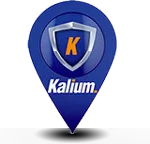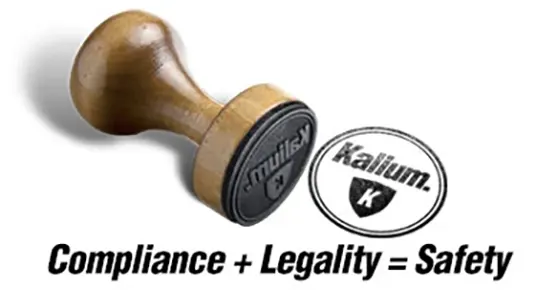WHMIS 2015 Training: GHS for Workplace Safety
|
The WHMIS training I received last September allowed me to be more up to date with the latest 2015 version. The prevention of various risks related to chemicals in the laboratory through appropriate labeling is well illustrated by concrete examples. The course is interactive and our questions are well addressed. I obtained the large format poster offered by the trainers to clearly indicate the incompatibilities. Excellent for our chemical storage section! |
I had the chance to participate in a training course on WHMIS 2015 with the Kalium Solutions team. Excellent training given by experts who perfectly master the subject with dynamic presenters who know how to capture the attention of their audience. Lots of concrete examples that allow you to fully understand WHMIS 2015. |
Training service up to my expectations! with a bonus ... the friendly side, which makes the heaviness of the subject more pleasant. Thank you Brigitte, for training on regulatory affairs and classification of chemicals (WHMIS 2015) |
WHMIS training online
Do you have chemicals in your workplace?
Do you know how to integrate the Act and the Regulation respecting occupational health and safety (ROSH)? According to this law, all your employees must receive WHMIS training before they even start handling these products. We have the right training for you. Our training complies with Health Canada and CNESST requirements and contains the information and training program. The latter includes procedures for the storage, handling, use and disposal of products.
This training aims to raise awareness of WHMIS and to make workers aware of impending hazards in their workplace. Each class and category of danger are thoroughly explained. We evaluate the entire journey of hazardous materials from their entry into the workplace to their output in finished products or residual materials. An audit (optional) is recommended beforehand.
We cover the following topics:
- Regulations origin
- Physical hazards (20 classes, categories and sub-categories)
- Health hazards (12 classes, categories and sub-categories)
- Mandatory requirements and information according to the hazard classes
- All 16 Safety Data Sheet (SDS) sections
- Labelling and packaging requirements
- Workplace Label (WPL)
- Storage and incompatilities
- Exceptions and exemptions
- Procedure to follow in an emergency
It is the implementation of WHMIS in the rules of art that will become an added value to your business! We privilege enjoyable learning with the help of games and didactic material. Each participant will receive a training booklet for future reference and a training certificate.
Mandatory WHMIS training course available formats:
- Online (by videoconference)
- In-class


1 - Summary and objectives of the training
Did you know that as an importer of chemicals in Canada you are subject to the same requirements as if you had manufactured it yourself? Did you know that carcinogens are not required to be disclosed in consumer products? Did you know that it is fully acceptable to find consumer chemicals in the workplace? Did you know that a pesticide is not subject to WHMIS?
These few examples are only a small part of the regulatory aspects framing the application of WHMIS in the work of chemists. We offer this WHMIS training adapted to professionals with the following modules:
2 - Training outline
Module 1: Regulatory Context
Module objectives:
Be able to:
- Link the path of UN recommendations to WHMIS 2015
- Analyze the impact of harmonization on occupational health and safety
- Distinguish the different actors and their respective responsibilities in WHMIS 2015
- Assess whether the WHMIS training offered is complete within the meaning of the ROHS and HPR
- Clearly explain the differences between WHMIS 1988 and WHMIS 2015
1.1 UN involvement in WHMIS 2015
1.1.1 Globally Harmonized System
1.2 Changes to the Controlled Products Regulations and WHMIS 1988
1.2.1 Introduction of the Hazardous Products Regulations
1.2.2 Benefits
1.3 Legal structure governing hazardous products
1.3.1 Consumer Chemicals and Containers Regulations and Federal Structure
1.3.2 Provincial structure : Provincial Occupational Health and Safety Act (62.1-21)
1.4 Application of WHMIS
1.4.1 WHMIS-exempt products
1.4.2 Role of each of the three WHMIS actors
1.4.3 WHMIS Education and Training
Module 2: Physical hazard classes and categories
Module objectives:
Be able to :
- Judge the risk's level of a situation involving flammability risks.
- Explain the need for specific aerosol storage to a superior
- Understand the complexity of categorizing physical hazards
- Summarize each of the physical hazard classes
2.1 Explosive substances and articles
2.2 Flammable gases
2.3 Flammable aerosols
2.3.1 Practical considerations of aerosols
2.3.2 Proper storage of aerosols in the workplace
2.4 Pyrophoric gases
2.5 Flammable liquids
2.5.1 The Flash Point
2.5.2 Implications of static electricity
2.5.3 Extinguishing a fire
2.6 Flammable solids
2.7 Self-reactive substances
2.8 Pyrophoric solids and liquids
2.9 Self-heating materials
2.10 Substances which, in contact with water, emit flammable gases.
2.11 Organic peroxides
2.12 Gases under pressure
2.13 Combustible dust
2.14 Oxidizers
2.15 Corrosives
Module 3: Health hazard classes and categories
Module objectives:
Be able to :
- Distinguish for corrosive between physical and health hazards
- Assess the level of risk associated with handling each type of corrosive
- Outline each of the health hazard classes
- Explain the aspiration hazard to a handler
- Judge the hazard's level of products to workers' health
3.1 Skin corrosion/irritation
3.2 Serious eye damage / eye irritation
3.3 Acute toxicity
3.4 Health hazard
3.4.1 Respiratory or skin sensitization
3.4.2 Germ cell mutagenicity
3.4.3 Carcinogenicity
3.4.4 Reproductive toxicity
3.4.5 Specific target organ toxicity - single exposure
3.4.6 Specific target organ toxicity - repeated exposures
3.4.7 Aspiration hazard
3.5 Biohazardous infectious material
Module 4: Safety Data Sheets (SDS)
Module objectives:
Be able to :
- Understanding an SDS
- Find relevant information in the event of an incident
- Analyze the compliance of an SDS
4.1 Structure in 16 parts
4.1.1 Use of Section 3 for the Chemist
4.1.2 Use of Section 4
4.1.3 Use of Section 11 for the Chemist
4.1.4 Consistency of sections with each other.
4.2 Analysis of a SDS: "Find errors"
4.2.1 Item spotting tricks that decrease the credibility of a SDS
4.2.2 Use of Non-Available versus Non applicable
Module 5 : WHMIS Labels
Module objectives:
Be able to :
- Oversee the proper labelling of hazardous products used in the workplace.
- Advise a supervisor on the type of labelling as needed
- Associate the types of labelling with the necessary associated training
5.1 Supplier label
5.1.1. Typical supplier label errors
5.2 Workplace label
5.2.1 Actual applicability of workplace label
5.2.2 Typical WPL errors
5.3 CCCR and TDG labels in the workplace
5.3.1 Implications for the employer
5.3.2 The weaknesses of this type of labelling
Module 6: The conclusion and miscellaneous important information
Module objectives:
Be able to :
- Judge the severity of disclosed hazards related to the classification
- Advise an employee on the appropriate level of protection.
- Comply with the specific requirements related to the type of heating
- Identify certain storage issues.
6.1 Storage incompatibilities
6.2 Introduction to Classification
6.3 Classification of mixtures hazardous to health
6.4 Natural gas heating
6.5 Fines and penalties.
Frequently asked questions
What is WHMIS 2015 training and who is it for?
The 2015 WHMIS (Workplace Hazardous Materials Information System) training is mandatory in Canada. Its purpose is to inform workers about the dangers posed by chemicals and hazardous materials used in their work environments. This training has been updated following the 2022 revision of WHMIS with the Globally Harmonized System (GHS revisions 7 and 8).
WHMIS training is divided into two main components:
- The information component is the general part that explains the different pictograms, their meanings, the different hazard classes and categories, and the information contained in a material safety data sheet (SDS) and on a compliant label.
- The training component is the customized part that informs workers about the hazards present in their workplace. It covers, in particular:
- the applicable guidelines for the safe use, handling, storage, warehousing, and disposal of hazardous products;
- precautions to be taken with regard to fugitive emissions, intermediate products, and hazardous residues present in the workplace;
- the procedure to follow in case of emergency;
- the location where the safety data sheets are kept and how to access them.
- Any other customized information.
This training is primarily intended for:
- Anyone who handles or uses hazardous products in industrial, educational, laboratory, maintenance, or other settings.
- WHMIS resource persons responsible for chemical safety in their workplace.
How does this training cover the changes from WHMIS 1988 to WHMIS 2015 (GHS)?
The WHMIS 2015 training was developed to clarify the main differences between the WHMIS 1988 and the new harmonized WHMIS 2015 system, which includes GHS standards. It updates terminology, explains the new pictograms, and reviews the new classification as well as labeling and safety data sheet requirements.
What specific topics are covered in the WHMIS 2015 training course?
The WHMIS 2015 training covers a range of topics essential to ensuring worker safety when dealing with hazardous products. It is designed to comply with Canadian and provincial regulations.
The following topics will be covered:
- Regulations origin
- Physical hazards (20 classes, categories and sub-categories)
- Health hazards (12 classes, categories and sub-categories)
- Mandatory requirements and information according to the hazard classes
- All 16 Safety Data Sheet (SDS) sections
- Labelling and packaging requirements
- Workplace Label (WPL)
- Storage and incompatibilities
- Exceptions and exemptions
- Procedure to follow in an emergency
Upon completion of the training, what will I be able to do?
After completing the Kalium Solutions WHMIS 2015 training, you will be able to identify, understand, and manage the hazards associated with chemicals in your workplace.
Specifically, you will be able to:
- Identify hazard pictograms
- Read and interpret labels
- Use safety data sheets (SDS)
- Apply preventive measures
- Respond in the event of an incident
- Protect yourself
- Work safely
In short, you will know how to work in a safe environment, in accordance with current regulations, while protecting your health and that of your colleagues.
How long does the WHMIS 2015 training take to complete?
Our WHMIS training is generally 4 hours long in order to fully cover all aspects of the hazardous product regulations. It includes practical exercises for each of the modules covered, to ensure that learning is fully integrated. The training also concludes with a knowledge evaluation. Shorter or more detailed training courses are available upon request to best suit your workplace.
Is there a certificate provided upon successful completion of the training?
Yes, a personalized certificate will be given to each participant.
How does this training help my company meet its legal obligations under WHMIS?
WHMIS is based on the principle of workers' “right to know.” WHMIS 2015 training is much more than just a course. It is a legal and strategic tool that will enable you to fulfill your obligations under Canadian occupational health and safety laws. The law requires all employers to inform and train their employees about the hazards associated with dangerous products in the workplace. Each province, including Quebec through the LSST and RSST, sets its own rules, but they are all based on the principles of WHMIS 2015.
Can this WHMIS 2015 training be customized for our specific workplace needs?
Yes, indeed! We can tailor the WHMIS 2015 training to meet your company's needs. To do so, we will take into account the hazardous products you use, the industry you work in, and the risks specific to your environment. By customizing the training, your company will increase its efficiency, regulatory compliance, and, above all, the actual safety of its employees.
What are the qualifications of the instructors who provide the WHMIS 2015 training?
Kalium Solutions' WHMIS trainers are all experienced chemists with a wide range of technical, pedagogical, and regulatory skills. As experts, they can effectively share their knowledge, helping you reduce the risk of accidents and incidents.
Their qualifications include:
- Experienced specialists in chemistry and regulations
- In-depth knowledge of WHMIS and GHS
- Experienced writers of safety data sheets (SDS) and WHMIS labels
- Knowledge of emergency response procedures and preventive measures
- Ability to lead groups and adapt content to the target audience (workers, managers, etc.)
- Approved trainers by the Quebec Commission des partenaires du marché du travail
How do I enroll myself or my team in the WHMIS 2015 training?
You can contact us through our "Contact an expert!" boxes on the various pages of our website, or by calling 450 906-6999.

Design, programming and hosting by VisionW3.com


